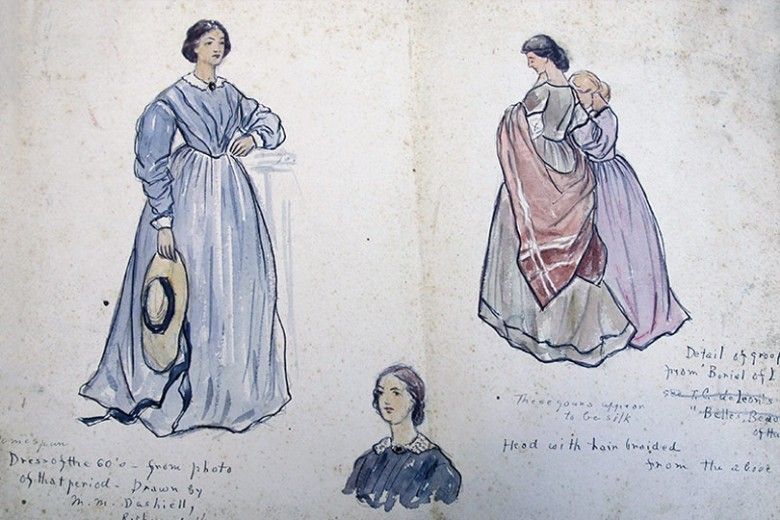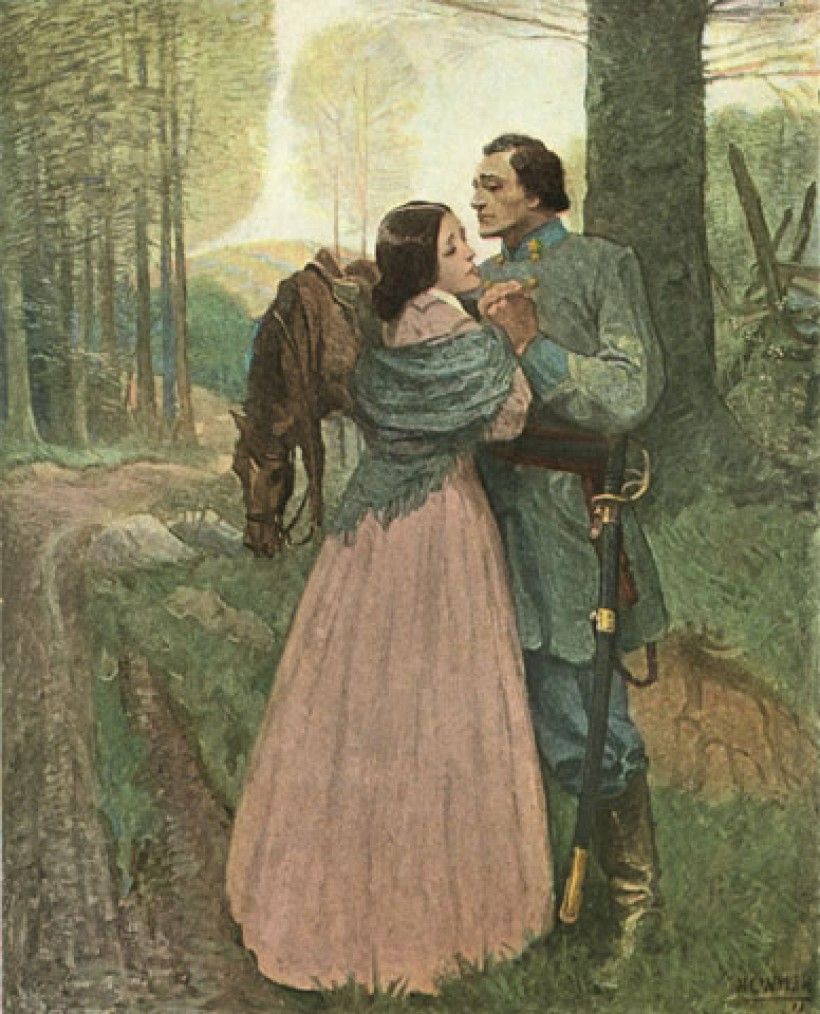Serendipity


The Lovers
As he prepared to paint The Lovers, Wyeth wrote to Johnston seeking her opinion on the clothing that would have been worn by the heroine. "What sort of outside wrap and bonnet would [Judith] wear this spring afternoon?” Wyeth inquired. “And please, say a few words about her hair and face?” Johnston’s response is lost, but in the next letter to her Wyeth thanks her for the watercolor drawing. That watercolor, clearly a resource for Wyeth’s painting, was not with the collection of letters.
Wyeth’s Inspiration

Notations on the sheet confirm that accurate period clothing was the point of the images. The long, gray dress on the left is marked “(Homespun), Dress of the 60’s from photo of that period”; the figures on the right, modeling dresses that “appear to be silk,” are credited as being from illustrations in the book Belles, Beaux and Brains of the 60s by T. C. de Leon, published in 1909. Finally, the watercolor is signed by “M. M. Dashiell, Richmond, Va.” who turns out to be Richmond poet and watercolorist Margaret May Dashiell (1869-1958). Dashiell, also a businesswoman who imported French fashion prints, was a friend of Mary Johnston.
Together, Once More
For his heroine’s costumes, N. C. Wyeth did not copy Dashiell’s figures, but you can tell that he consulted the examples. Judith wears a dress similar to that of the figure on the left, her hair style resembles that modeled by the bust-length figure. In her embrace with Colonel Cleave, Judith has clutched her shawl tightly about her, rather than drape it as shown in the watercolor. It’s very exciting that Wyeth’s painting and its inspiration have been reunited and that another aspect of the artist/author collaboration has come to light.


Coming up on September 26, 2015 you can enjoy two free tickets to the museum as a part of Museum Day Live! Visit our website to learn how to claim your tickets and come see some of N.C. Wyeth’s most famous works or his art studio in person.
Images:
Margaret May Dashiell (1869-1958), Untitled (Civil War era fashions), 1911, Watercolor, pencil and ink on paper, N. C. Wyeth House and Studio Collection, Brandywine River Museum of Art
N. C. Wyeth (1882-1945), The Lovers, 1911, Oil on canvas, known by reproduction only
Unknown Photographer, Portrait of Mary Johnston, circa 1908, Reproduced photograph (possibly from periodical) found in N. C. Wyeth’s correspondence, Wyeth Family Archives
Margaret May Dashiell (1869-1958), Untitled (Civil War era fashions), 1911, details